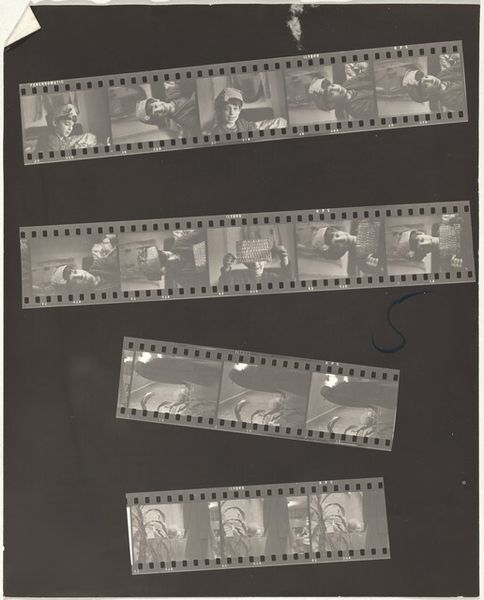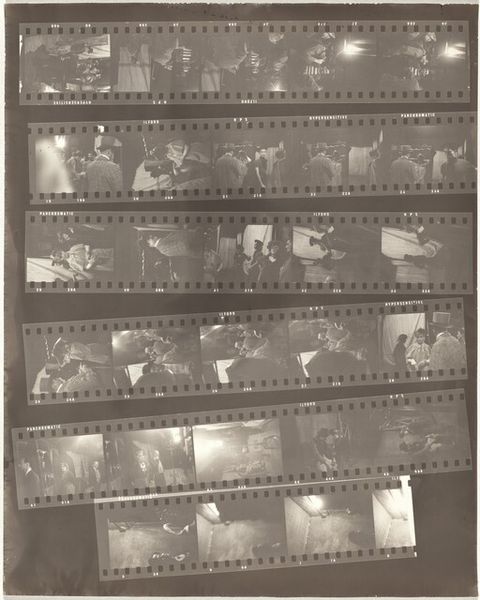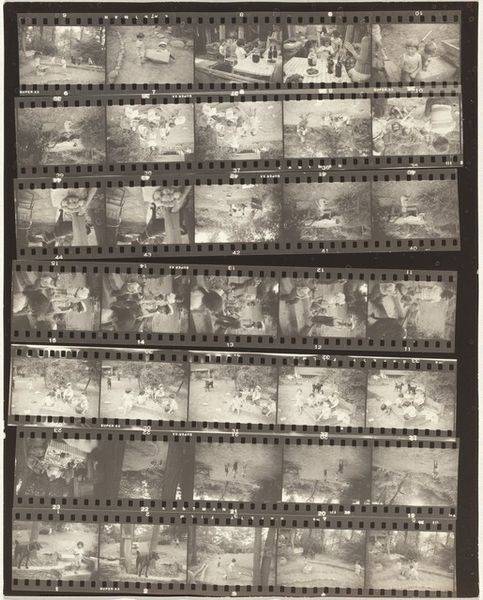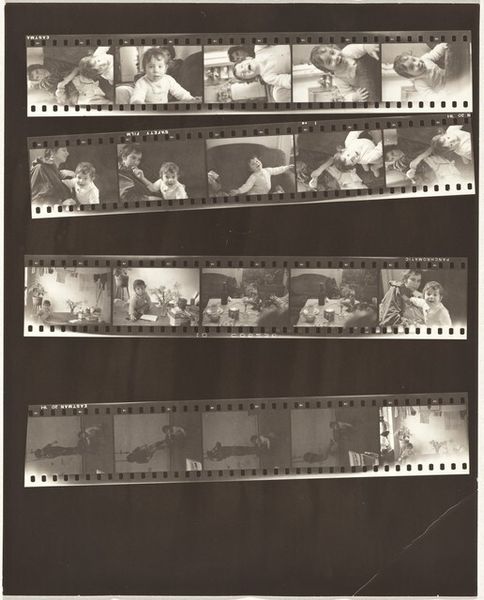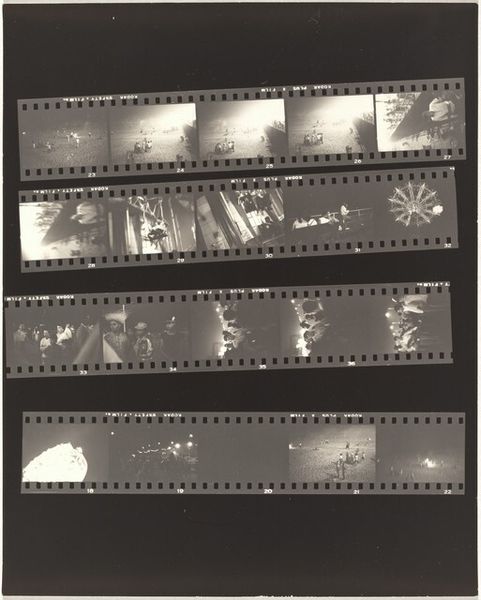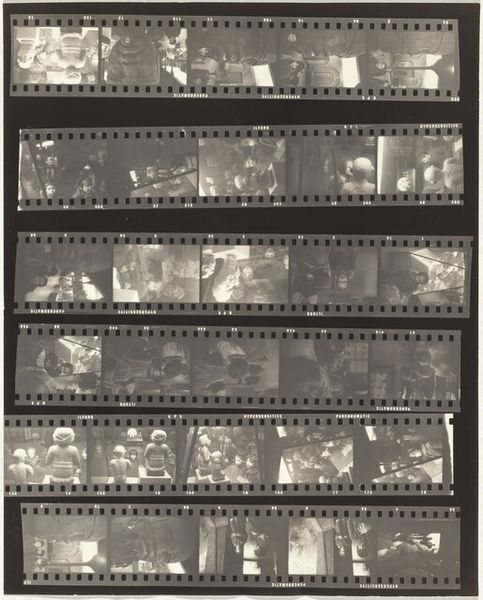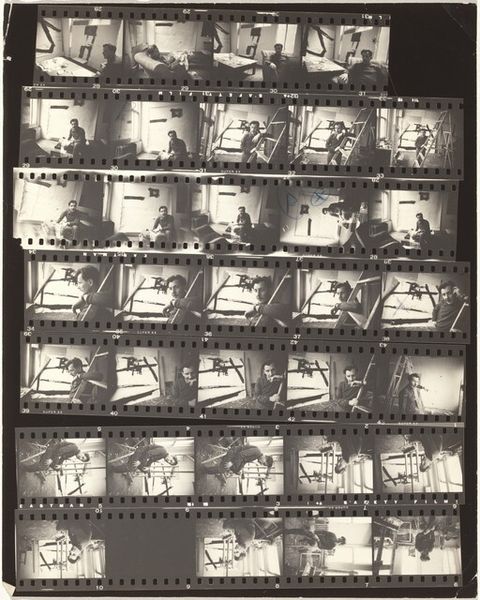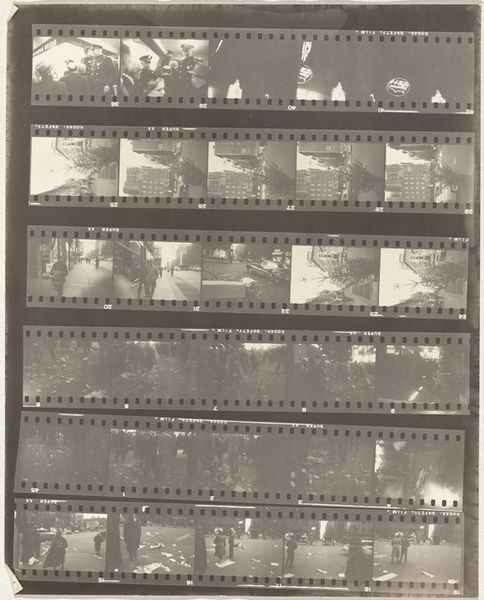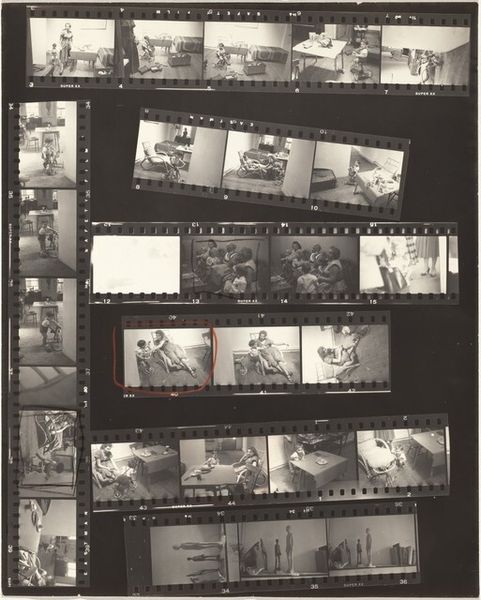
Dimensions: sheet: 20.2 x 25.2 cm (7 15/16 x 9 15/16 in.)
Copyright: National Gallery of Art: CC0 1.0
Curator: Today we’re looking at Robert Frank’s "Women for ‘Vogue’--rejects 18", a photographic print created between 1952 and 1953. It's a series of black and white images arranged in strips, resembling film negatives. Editor: It’s fragmented, almost like a contact sheet of moments rather than a singular polished image we expect from Vogue. There’s a rawness, a kind of behind-the-scenes glimpse into a world normally so carefully curated. Curator: Precisely. What's fascinating here is that these are the rejects. The images deemed unsuitable for the pages of a high-fashion magazine. We are given access to images the public wasn't intended to view. It challenges the constructed facade. Editor: It also gives space to considering who gets to decide what’s deemed acceptable and fashionable. And the implications for those whose images, and by extension identities, don't make the cut. What is beauty and who is the arbiter of that ideal? Curator: Consider too the social climate of the early 1950s. There are suggestions in the arrangement that speak to class divisions, to constructed elegance, but there’s also a candid reality presented in each frame that feels deliberately counter to the era's dominant image. Editor: Exactly. There’s an uneasy tension here. Frank, perhaps, intended to expose not just the glamorous surface of fashion, but also the machinery and the selective process behind it. The very fact that it was rejected is its own statement. Curator: This photographic compilation almost serves as a visual critique. In its form and its content it prompts questions about artifice, and who ultimately controls the narrative. What power did Vogue yield at this time in constructing aspirational identities? Editor: Yes, it encourages us to delve into the socio-political landscape, exploring the prevailing norms and challenging conventional standards of beauty. To me, "Women for 'Vogue'--rejects 18" holds power in these unfiltered perspectives and serves as a vital reflection on representation. Curator: By exhibiting the 'rejects,' the photograph invites contemplation, encouraging the viewer to question constructed ideas surrounding the industry. A challenging, but important perspective, Editor: Ultimately, it is a work that underscores the crucial role art plays in critiquing cultural norms and fostering a dialogue about the multifaceted nature of beauty, image and self.
Comments
No comments
Be the first to comment and join the conversation on the ultimate creative platform.
